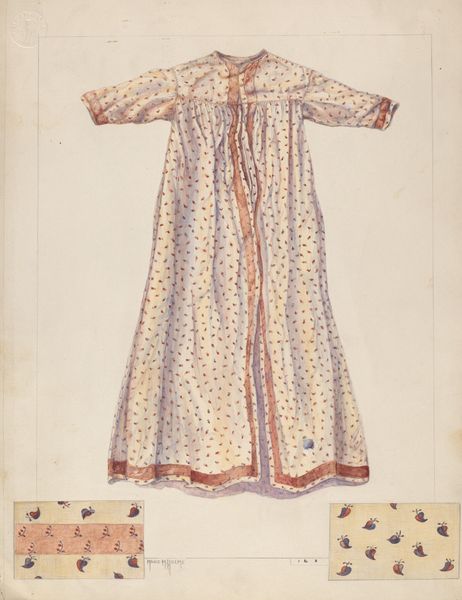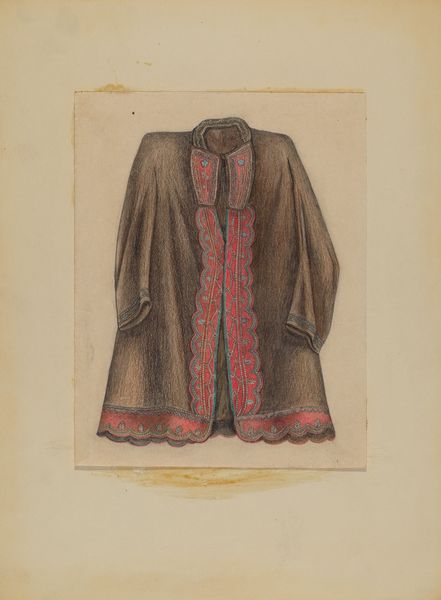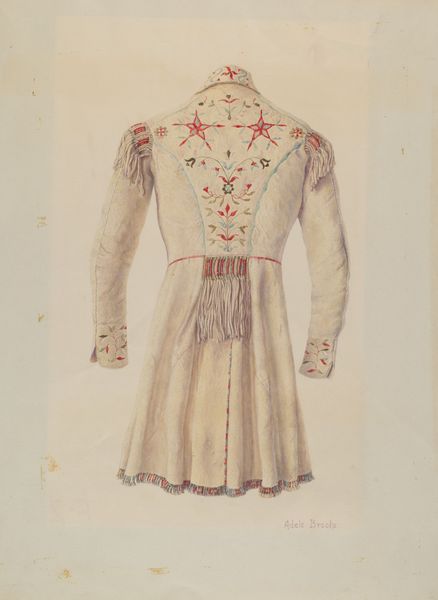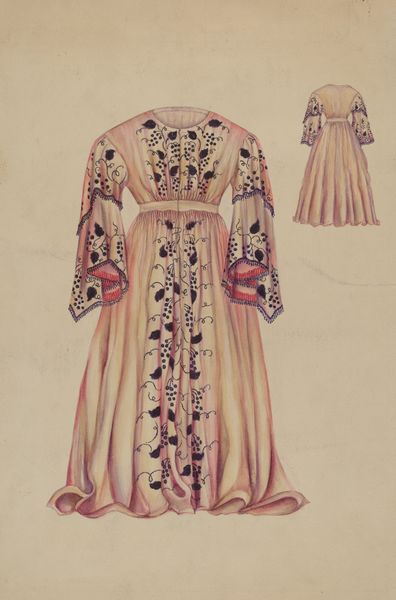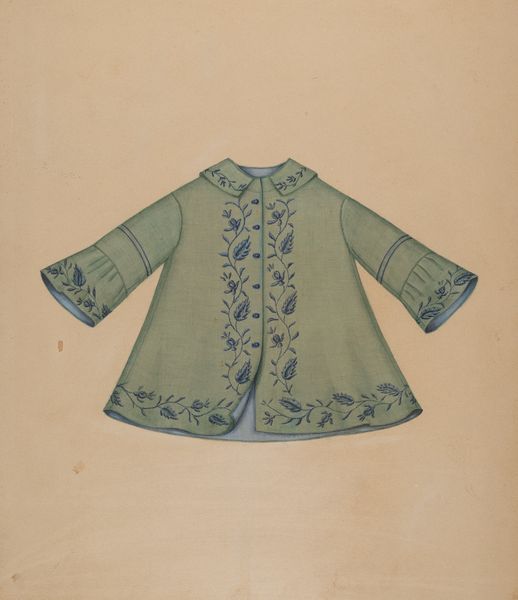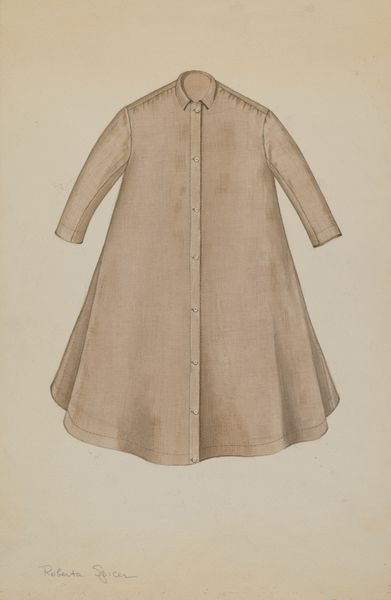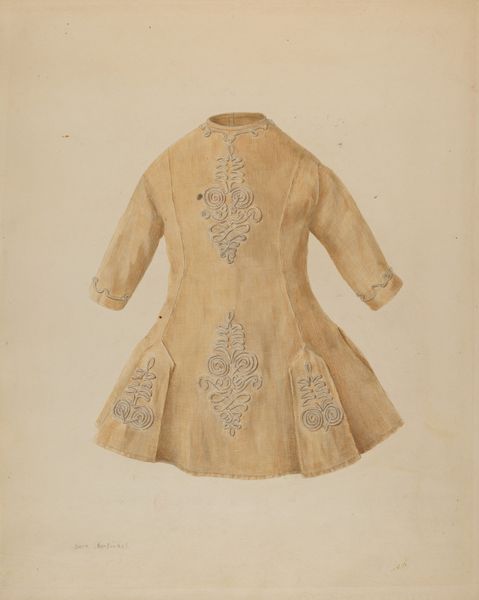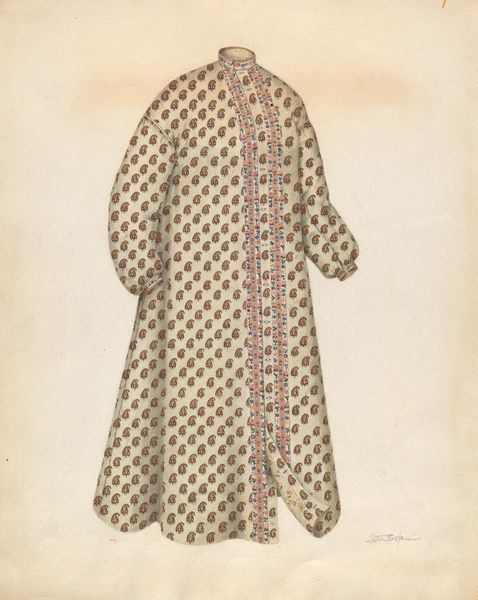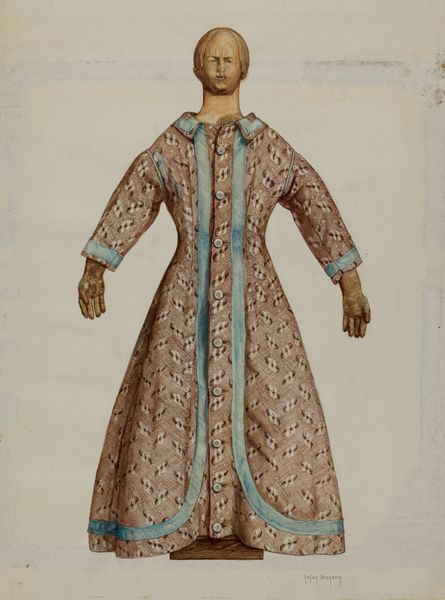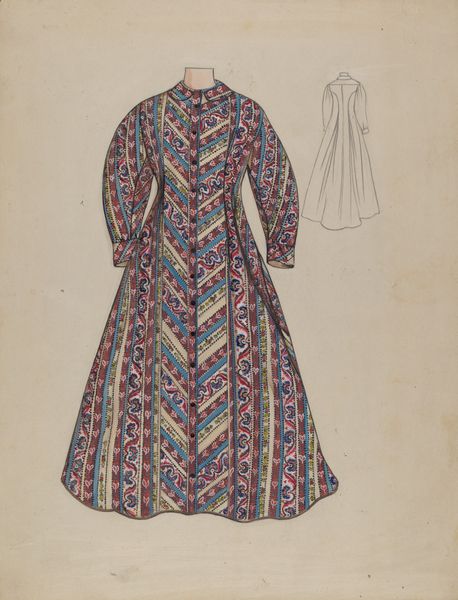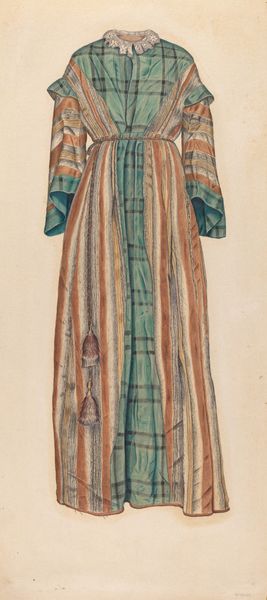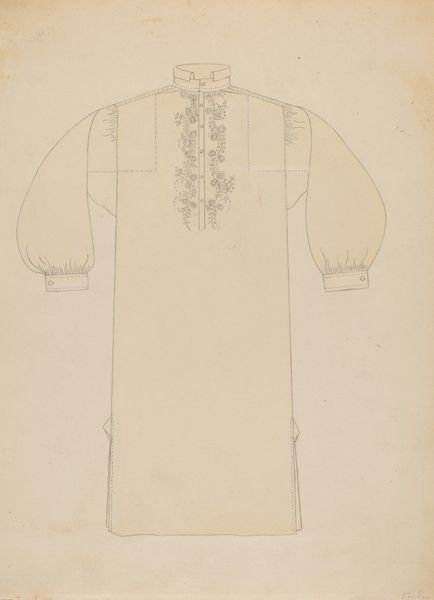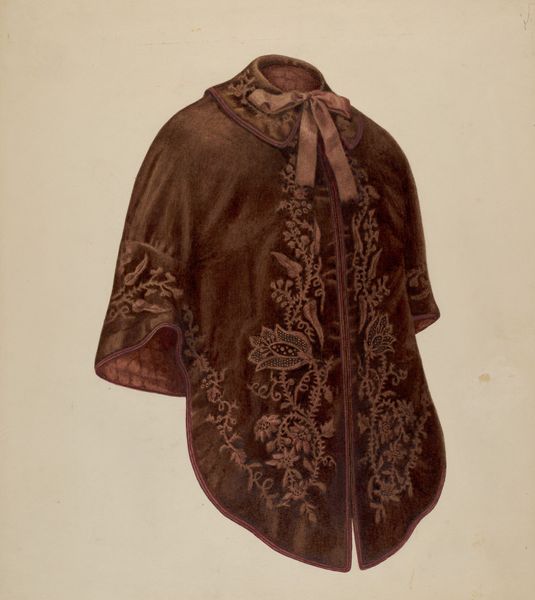
drawing, watercolor
#
portrait
#
drawing
#
watercolor
#
genre-painting
#
watercolor
Dimensions: overall: 28.2 x 22.9 cm (11 1/8 x 9 in.)
Copyright: National Gallery of Art: CC0 1.0
Curator: Up next we have Edna Rex's "Boy's Dressing Gown," a watercolor drawing from around 1937. What strikes you first about this work? Editor: It feels so delicate, almost spectral. That barely-there pink, the soft edges... It’s like a memory of warmth, but somehow fragile. Curator: Indeed. The color palette certainly evokes a sense of innocence and gentleness. Notice the pattern chosen—it’s intentionally repetitive with motifs echoing older floral decorations in children’s clothing throughout Europe. These small rose-like floral patterns woven into the gown become mnemonic devices that subtly underscore traditional domestic roles. Editor: Mnemonic, that’s a big word! But you're right, even the button line kind of whispers "tradition." Is it odd that something so mundane almost feels loaded? Maybe because, nowadays, kids could care less what they lounge around in, right? Curator: It’s precisely that juxtaposition that is compelling! A boy's dressing gown in itself as subject carries significant cultural weight—it symbolizes home, security, childhood, domesticity. By capturing it through watercolor on paper during the Federal Art Project, Rex essentially immortalizes a certain idealized lifestyle and family values during challenging economic times in 1930s America. Editor: So it's more than just, 'here's a robe?' Makes you wonder about the specific boy who may have owned something like this and whether Edna Rex perhaps knew this boy. You almost get a hint of longing in its quietness... and this small square depicting some fragment of what that robe probably looked like feels like finding a photo from your own past, it gives that kind of vibe, isn’t it? Curator: Absolutely! This "genre painting" serves as a potent vessel of remembrance. The visual motif speaks of nostalgia through its rendering of idealized daily life that has transformed as the symbols remain constant. The symbolism is powerful due its cultural continuity and emotional impact on viewers across generations. Editor: Seeing it that way definitely makes the color choices resonate differently now. Like she isn’t just representing a garment, but conjuring up an era… and maybe an essence of what childhood 'felt' like then, or what grownups wanted you to feel. So the memory takes center stage... a shared sort of feeling from home. Well, color me pensive!
Comments
No comments
Be the first to comment and join the conversation on the ultimate creative platform.
